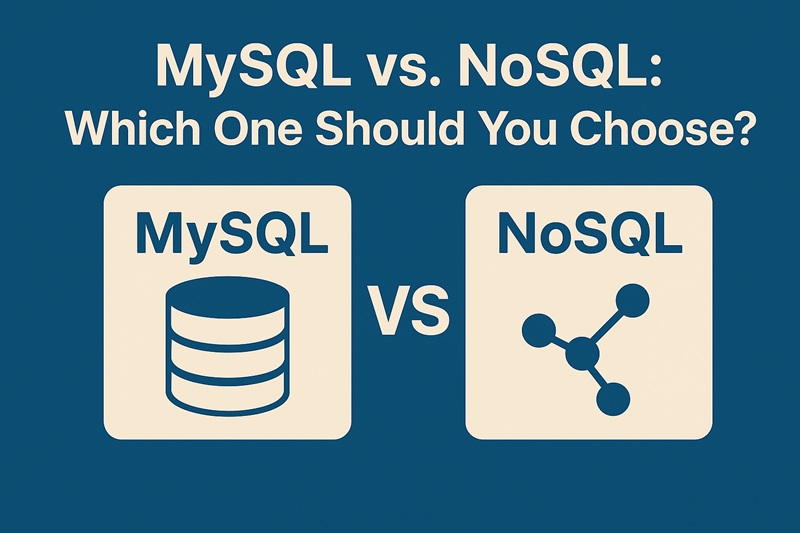Choosing the right database is one of the most critical decisions when building an application or managing large volumes of data. Among the most widely debated options are MySQL and NoSQL. Both have unique strengths, limitations, and use cases. Understanding their differences can help you make an informed choice that aligns with your project’s goals.
What is MySQL?
MySQL is a relational database management system (RDBMS) that stores data in structured tables with rows and columns. It follows the SQL (Structured Query Language) standard and has been widely used for decades in web applications, enterprise systems, and content management platforms. Popular services like WordPress, Facebook (in its early stages), and Twitter initially relied heavily on MySQL.
Key Features of MySQL:
- Structured schema with predefined tables and relationships.
- Supports complex queries using SQL.
- High consistency and reliability.
- ACID compliance (Atomicity, Consistency, Isolation, Durability).
- Strong community support and extensive documentation.
What is NoSQL?
NoSQL (Not Only SQL) refers to a wide category of databases that move away from the traditional relational model. They are designed to handle unstructured, semi-structured, or rapidly changing data. NoSQL databases are often chosen for scalability and flexibility. Popular NoSQL databases include MongoDB, Cassandra, CouchDB, and Redis.
Key Features of NoSQL:
- Schema-less or flexible data models.
- Can handle structured, semi-structured, and unstructured data.
- Horizontal scaling across multiple servers.
- Supports high-volume, real-time applications.
- Different types: Document-based, Key-value, Column-family, Graph databases.
MySQL vs. NoSQL: Key Differences
| Aspect | MySQL | NoSQL |
|---|---|---|
| Data Structure | Structured tables, fixed schema | Flexible, schema-less models |
| Scalability | Vertical scaling (adding more power to one server) | Horizontal scaling (adding more servers) |
| Consistency | Strong consistency with ACID properties | Often prioritizes availability and partition tolerance (CAP theorem) |
| Query Language | Uses SQL | Varies by database type (JSON, key-value, graph queries) |
| Best For | Applications needing structured data and transactions | Big data, real-time analytics, IoT, content-heavy apps |
When to Choose MySQL?
You should choose MySQL if:
- Your application requires structured data with relationships (e.g., e-commerce platforms, financial systems).
- You need complex queries and transactions.
- Your project relies on data integrity and consistency.
- You prefer an established, battle-tested technology with wide support.
When to Choose NoSQL?
You should choose NoSQL if:
- Your application deals with large-scale, rapidly changing, or unstructured data.
- You need high scalability to handle millions of users.
- Your system focuses on real-time analytics or big data processing.
- You require flexibility in data storage formats like JSON or key-value pairs.
Conclusion
Ultimately, the choice between MySQL and NoSQL depends on your project requirements. If your application demands structured data, transactions, and strong consistency, MySQL is the right choice. However, if you’re building scalable applications with large volumes of unstructured data, NoSQL is more suitable. In many modern architectures, businesses even use a hybrid approach—leveraging MySQL for structured operations and NoSQL for large-scale, flexible data handling.
Tip: Always evaluate your application’s future growth and data patterns before committing to one database model. Contact Rapid Web Tech, in case of any assistance.





